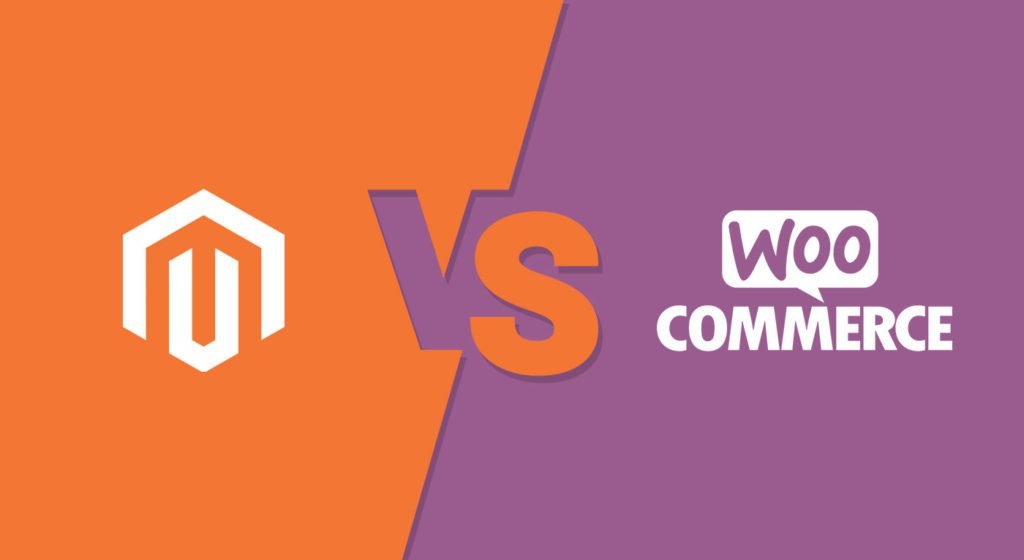25 Feb, 2022 | E-commerce Development
Woocommerce VS Magento- Choose the right platform for your e-store!

A quick overview of Magento vs Woocommerce:
Introduced in the year 2011 by Woo themes, WooCommerce began its journey to capture the WordPress industry with its interactive E-commerce features. WooCommerce app development is considered as the most technically sound e-commerce software for its users. Supporting around 30% of the whole E-Commerce market, WooCommerce now has about 1o million+ active users worldwide. If we talk about WooCommerce themes in Theme Forest, WooCommerce has about 1144 items. In the list of WordPress.org, it has around 567 WooCommerce Themes, and in mojo-themes, there are approx. 240+ WooCommerce themes are available. In total, it contributes over 1800+ themes. So WooCommerce will never fail on delivering intriguing themes when it comes to redesigning your E-commerce websites. Magento begun journey in the year 2008, developed & founded by Varian, Inc. In the present scenario, the Magento market is currently ruling over 8% of the total E-Commerce market. Undoubtedly, Magento is one of the vast & robust E-Commerce applications available in the market. Presently, the active user of Magento app development has reached 25, 0000+. Magento also offers a good number of themes to enhance the website. There are around 890+ Magento themes in Theme Forest, giving its users absolute freedom to design the e-store the way they want. Now let’s explore the core features of Woo-commerce and Magento:- Prominent features:
- As we know it’s a WordPress plugin it can manage all E-commerce related problems from the WP-Admin dashboard of your site.
- It also empowers marketing campaigns such as coupon codes, discounts, usage limitations, and a lot more.
- WooCommerce has excellent reporting facility of the level of inventory, sales income, overall store performances, product, and customer reviews.
- It supports several popular payment gateways that include Cash on delivery, PayPal, and Stripe for credit card payments.
- Ability to fix free or flat rate shipping for product delivery.
- You get options to control tax settings with local tax rates.
- It offers exclusive and customizable templates to design your e-store.
- Magento can deliver customer segmentation, target marketing, and merchandising.
- It also provides alternatives to set more than one wish list.
- Magento applications are highly portable device responsive.
- It allows you to add many product attributes.
- One can take leverage of the privacy feature in selling a product to a particular customer.
- Has an integrated content management system.
- Limitations-
- If not maintained well, it becomes vulnerable to security concerns.
- A variety of plugin clashing with one another.
- Various severe developer risks.
- It requires self-hosting & consistent updates of core plugins.
- It is usable only on WordPress hosted platform.
- For operating Magento, developers need appropriate knowledge as the system is complex to manage.
- It is costly to use and maintain.
- Executing themes & third party apps are tough.
- It needs regular software updates.
- To overcome higher developer risks, it requires incredibly skilled employees to manage and control the application.
- Pricing-
- Ease of use:
- Site performance-
Bottom line
Magento vs WooCommerce boast a fantastic feature, which makes it challenging to choose the right platform for your business. Both are strong contenders, and so we suggest you understand your business goals and evaluate the platforms for selecting the right fit. If you’re looking for a reliable company that can help you make a better decision, then get in touch with us.Frequently Asked Questions
Woocommerce is a plugin for WordPress, while Magento is a standalone e-commerce platform. Woocommerce is simpler and easier to use, while Magento is more powerful and feature-ric
The platform you choose depends on your business needs and requirements. If you have a small to medium-sized business and want a simple and easy-to-use platform, then Woocommerce may be the right choice. If you have a larger business and need more advanced features, scalability, and customization options, then Magento may be the better option.
Yes, it is possible to migrate from one platform to the other, but it can be a complex process. You may need the assistance of a developer or a migration service to ensure a smooth transition.
While it is possible to use both platforms together, it can be challenging to manage and maintain two separate e-commerce stores. It may be more efficient to choose one platform that meets all your e-commerce needs.

